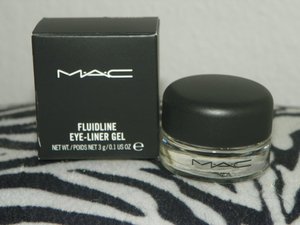Wicker furniture and accessories are items that never seem to go out of style. Wicker instantly adds texture to a room and a natural quality that doesn’t have to be reserved for sunrooms or porches. While wicker in a natural earthy color is always fashionable, the same holds true for painted wicker pieces. Whether the wicker is antique with peeling paint or new wicker that needs to be customized with color, painting wicker is a simple do-it-yourself project.
No matter what type of painting project, the rules are similar. Preparation is the key to success. It’s usually the least fun part of the task, but a necessary one all the same. Starting with a clean surface will help the paint adhere to the wicker and last longer. Older wicker pieces will need a more detailed cleaning than new wicker. After the prep work is finished, then the rest is up to the imagination.
Wicker can be stenciled, stamped or painted free hand. Painting stripes, simplistic flowers, or polka-dots are simple ways to add a fun touch to wicker furniture that don’t require artistic skills. Another way to get more than one color on a piece of wicker furniture is by painting the legs or obvious trim pieces a contrasting color.
Spray painting can be a messy job, so keep this in mind when choosing the place and time for this project. A warm, dry and windless day is the best time to spray paint. Laying down large drop clothes or plastic sheets on a flat lawn area with adequate space is preferable. Part of a large cardboard box can be used as a screen to help prevent spray paint from drifting onto grass, trees or plants.
Supplies:
Old toothbrush or scrub brush (and a vacuum cleaner)
Bleach
Clean damp cloth (painters’ lint-free rags are good choices)
Fine-grit sandpaper
Tack cloth
White spray primer
Spray paints of choice
Drop clothes, etc.
Optional Supplies:
Stencils
Foam stamps
Flat and round artists’ brushes
Masking tape (for stipes and/or holding stencils in place or for keeping paper and plastic in place)
Spray varnish
1: The first step to a successful paint job on wicker is to thoroughly vacuum every little nook and cranny. Use the vacuum’s crevice tools and upholstery brush tools to make the job easier.
2: The next cleaning task is with water. It seems to be a misconception that wicker shouldn’t get wet. If wicker stayed continuously wet or submerged, then it would deteriorate quickly. But an occasional scrubbing with water and brush is the only way to get it clean. For wicker that has been previously painted, using a small scrub brush or old toothbrush dipped in a mild bleach solution will do a great job of removing grease, grime and any mildew. Unpainted wicker can be rinsed clean with a solution of one tablespoon of salt to a quart of water.
3: This step is short and simple, but important nonetheless. Wipe the wicker all over with a soft damp cloth to remove any residue left behind from the previous step and then let the wicker completely dry.
4: After the wicker is dry, give it a light sanding with a very fine-grit sandpaper. This will smooth out any rough places in the wicker whether it’s new, vintage, previously painted or stained. Use a tack cloth to remove the sanding dust.
5: Priming the wicker with white spray primer is important to ensure the top coat of paint will be its true color. Follow with several thin coats of spray paints of your color choice. (Don’t forget to keep shaking the can of spray paint) If part of the furniture’s design is to remain white or the base color, this is the time to cover those parts with taped on plastic or paper.
6: Don’t rush the spray painting process! It’s much better to paint several very thin coats than one or two thick coats. Thick coats of paint will only run and clump together. Spray several thin coats of paint from several different angles to get into the crevices of the wicker. With each thin coat of paint that is applied, your wicker will build up a smooth and professional-looking finish.
Remember that it’s just paint. There is no painting mistakes that can’t be corrected. If some paint ends up where it wasn’t supposed to be, then use a small artist’s brush to “erase” the mistake. An example would be if the stencil wasn’t flat enough and paint went behind it. This mistake can even be corrected without spray painting the area again.
A simple fix is to spray a small amount of the base paint color into a container. Dip a brush into the paint and go over the mistake. Spray paint can be used this way, but it needs to be done quickly since spray paint dries fast. This is why spraying only a small amount of paint at a time in a container is important.
Wicker is a beautiful and textural element to add to any room. Customize it to fit your own personal style. Use your imagination and have fun with it. And last but not least, enjoy your new wicker creation!






